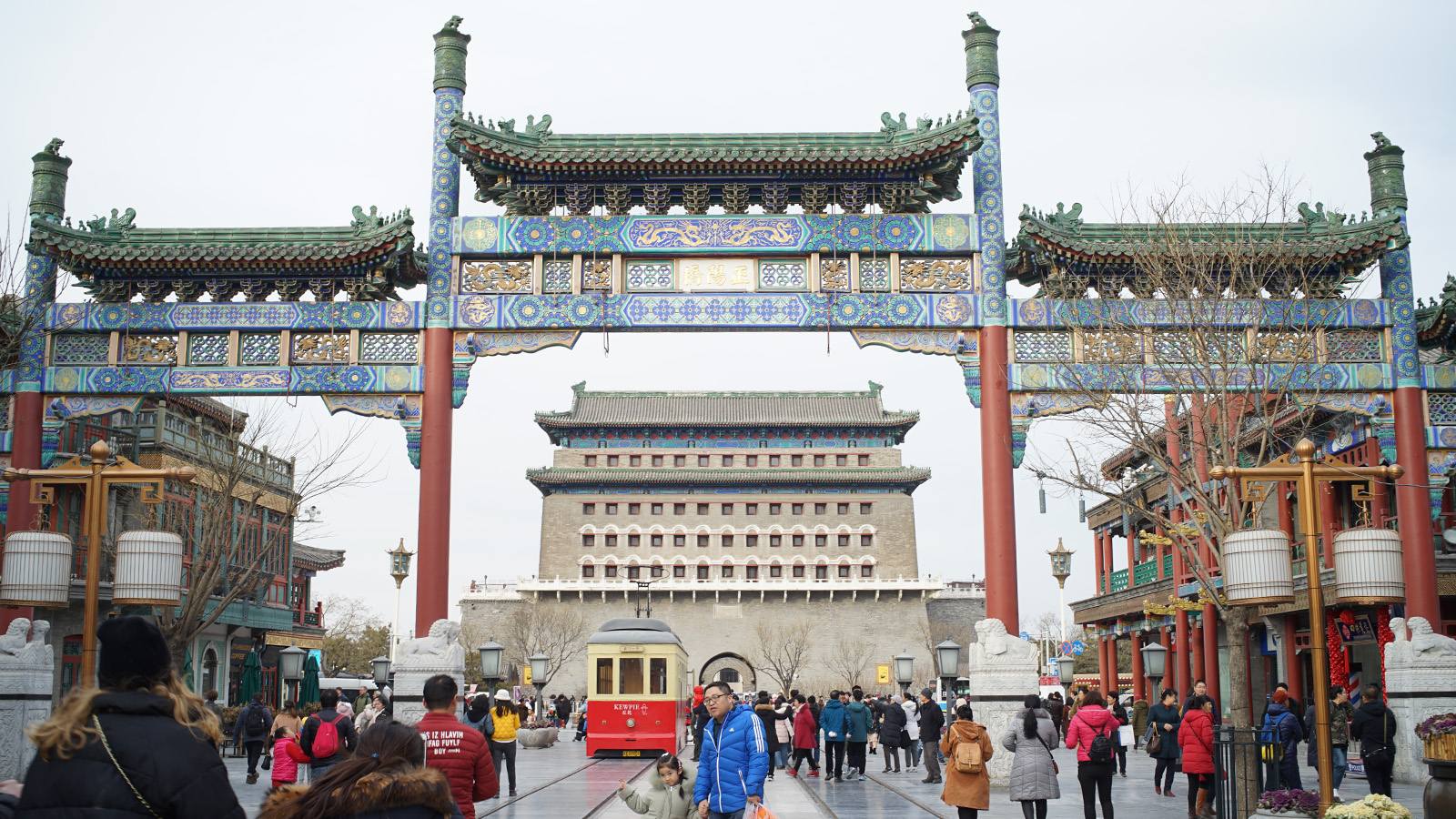Located at the central axis of Beijing, Qianmen Street is a famous pedestrian street for shopping and sightseeing, which has a history over 570 years. During the Qing Dynasty (1644-1912), small business, craftsmen's workshops and theaters were prosperous in the Hutongs (small alleys in Beijing) nearby.
Qianmen Street was under renovation as a new tourism attraction since 2008, aiming to keep the old style of the streets while introducing new elements into the historical site. And today we will explore a different Qianmen hidden in the Hutongs of the Chinese capital city.
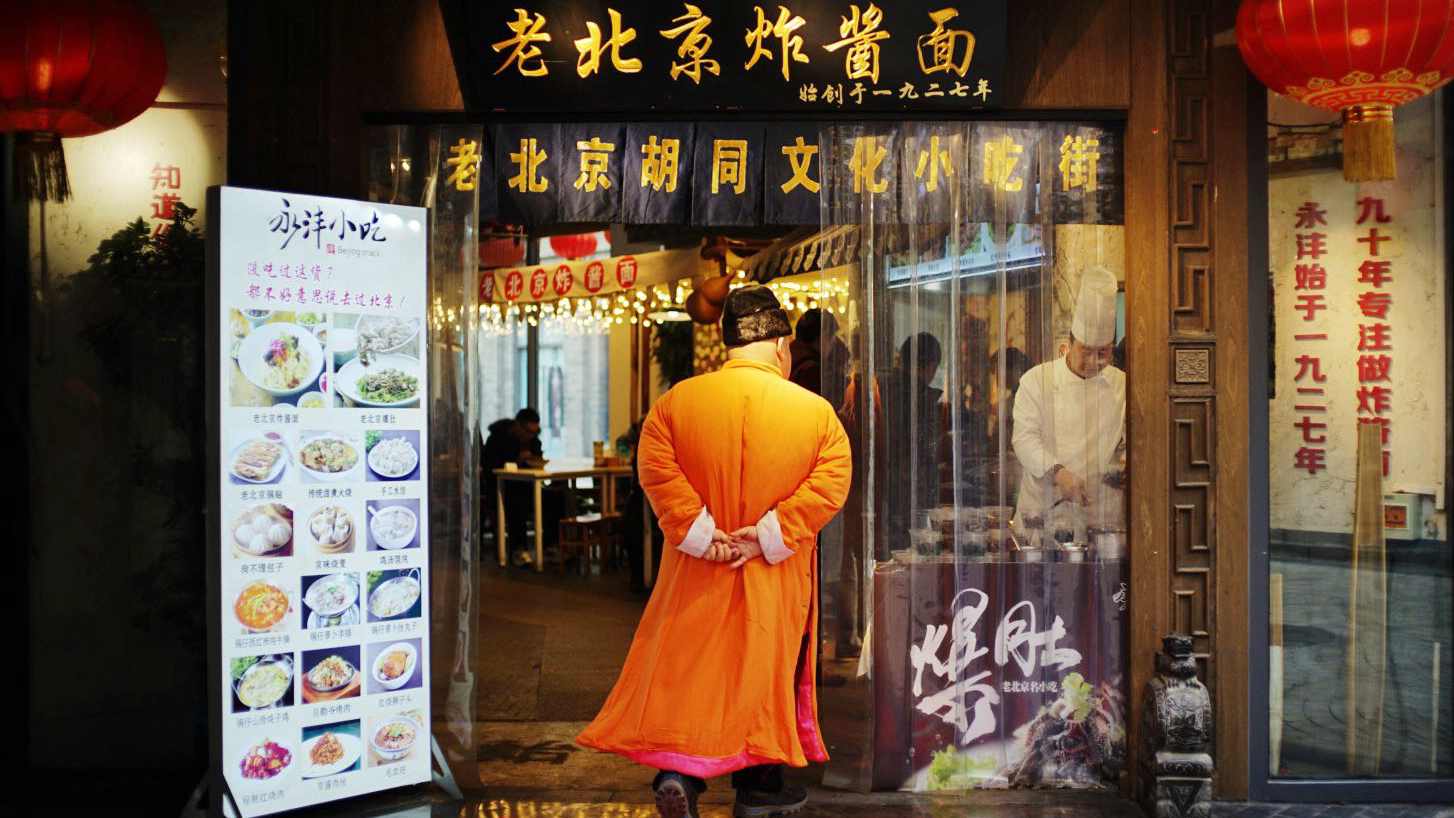
Beijing noodle store on Qianmen Street in Beijing. /CGTN Photo
Beijing noodle store on Qianmen Street in Beijing. /CGTN Photo
What to see
Da Shi Lar:
Pronounced as "da shi lar" in local Beijing accent, otherwise, you will get lost when finding the area. It is different from the characters' pinyin pronunciation. Many time-honored brands in old Beijing are well preserved and still run, such as the hat store of Ma Ju Yuan, the shoe store of Nei Lian Sheng, or the most well-known silk fabric store of Rui Fu Xiang – these all make you part of the prosperous scene in ancient times.
Xian Yu Kou:
Walking south of Qianmen Street, you will see an archway of Xian Yu Kou Food Street, which is one of the most famous food streets in Beijing. Restaurants over hundreds of years old provide you different choices of flavors across China.
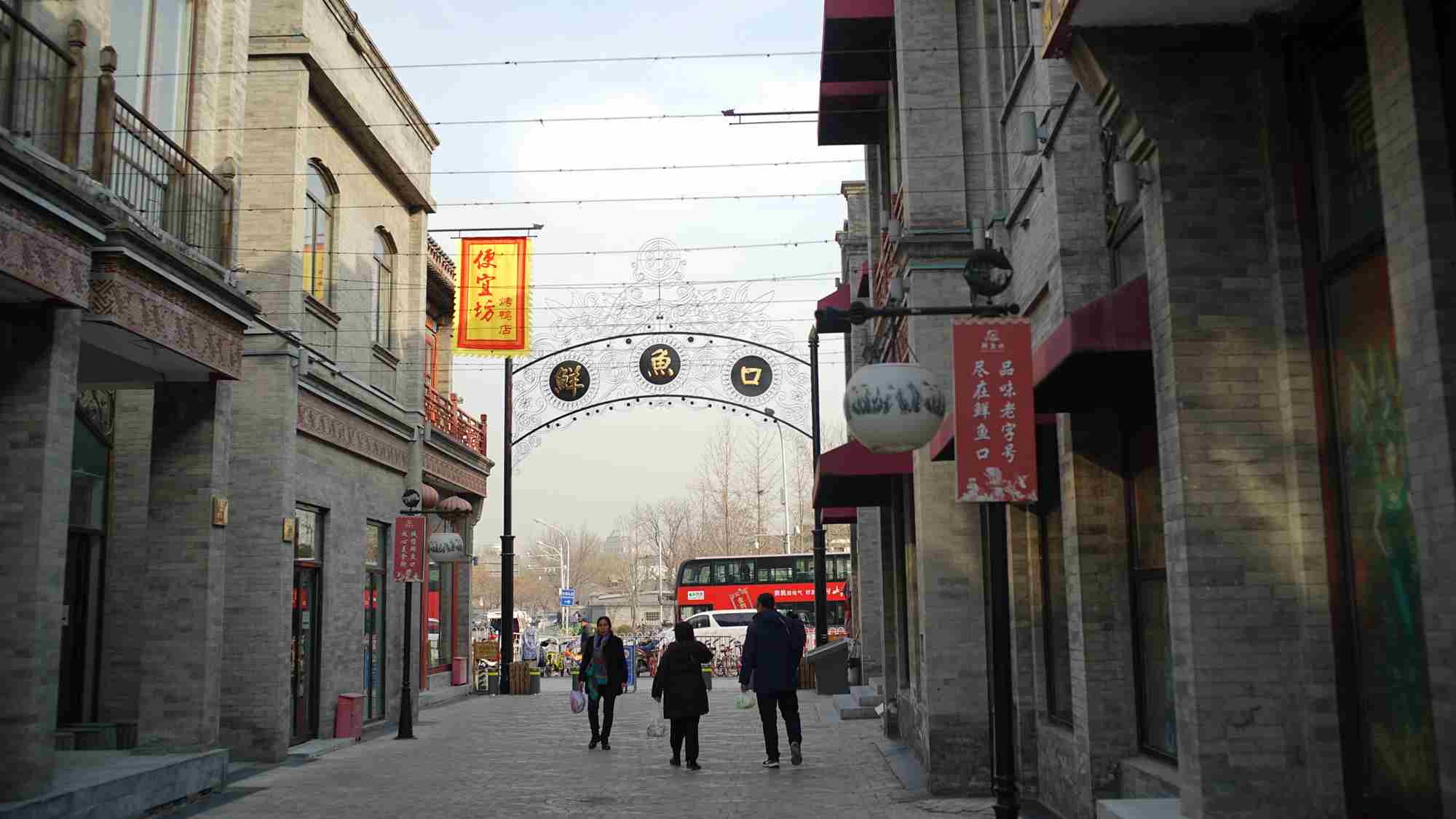
Archway of Xian Yu Kou Food Street in Qianmen Street in Beijing. /CGTN Photo
Archway of Xian Yu Kou Food Street in Qianmen Street in Beijing. /CGTN Photo
What's more, snack lovers will be interested in traditional dim sums like Yuan Xiao, Fried Butter Cake and Steamed Rice Cakes (Ai Wo Wo) from an old brand Jin Fang.
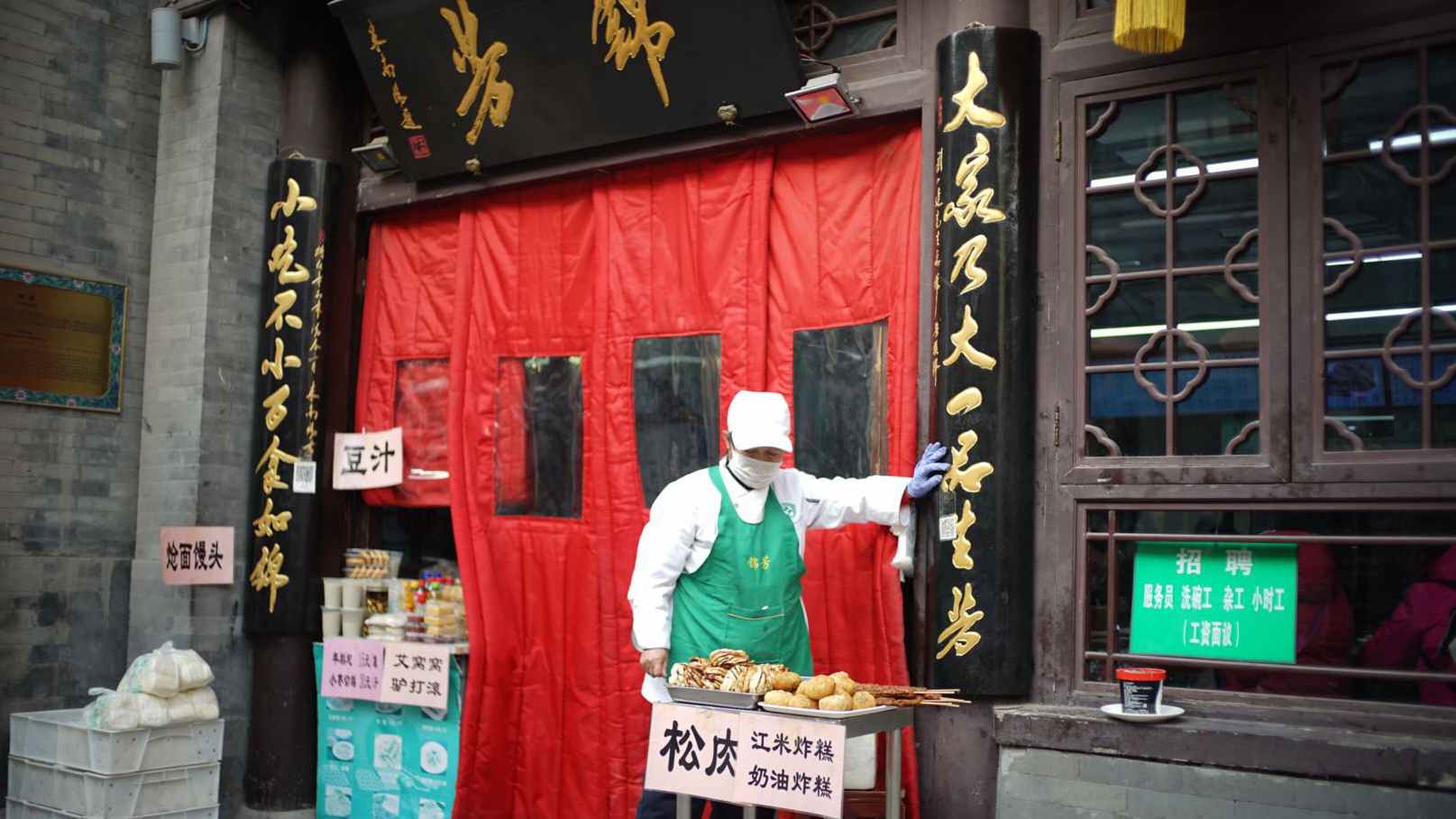
Old snack brand Jin Fang in Qianmen Street in Beijing, China. /CGTN Photo
Old snack brand Jin Fang in Qianmen Street in Beijing, China. /CGTN Photo
What to experience
Ride DangDang trams:
Dangdang trams were introduced to Beijing in 1924 and had been abandoned for decades. Now, they have returned to Qianmen Street as tour trams to remind you of old times. The trams start from both the north and south ends of Qianmen Street and cost 15 RMB (2.2 U.S dollars) per single trip.

Dangdang tram at Qianmen Street. /CGTN Photo
Dangdang tram at Qianmen Street. /CGTN Photo
Take photos at Beijing Fun Complex:
This is a newly developed art and commercial district near Qianmen. Combined with well-kept old style buildings and modern architectures and statues, this area is a unique experience for tourists.

Logo of Beijing Fun Complex in Qianmen Street. /CGTN Photo
Logo of Beijing Fun Complex in Qianmen Street. /CGTN Photo
Various vintage stores, open art museums and the great combination of old and new will offer you a place to create avant-garde photos.
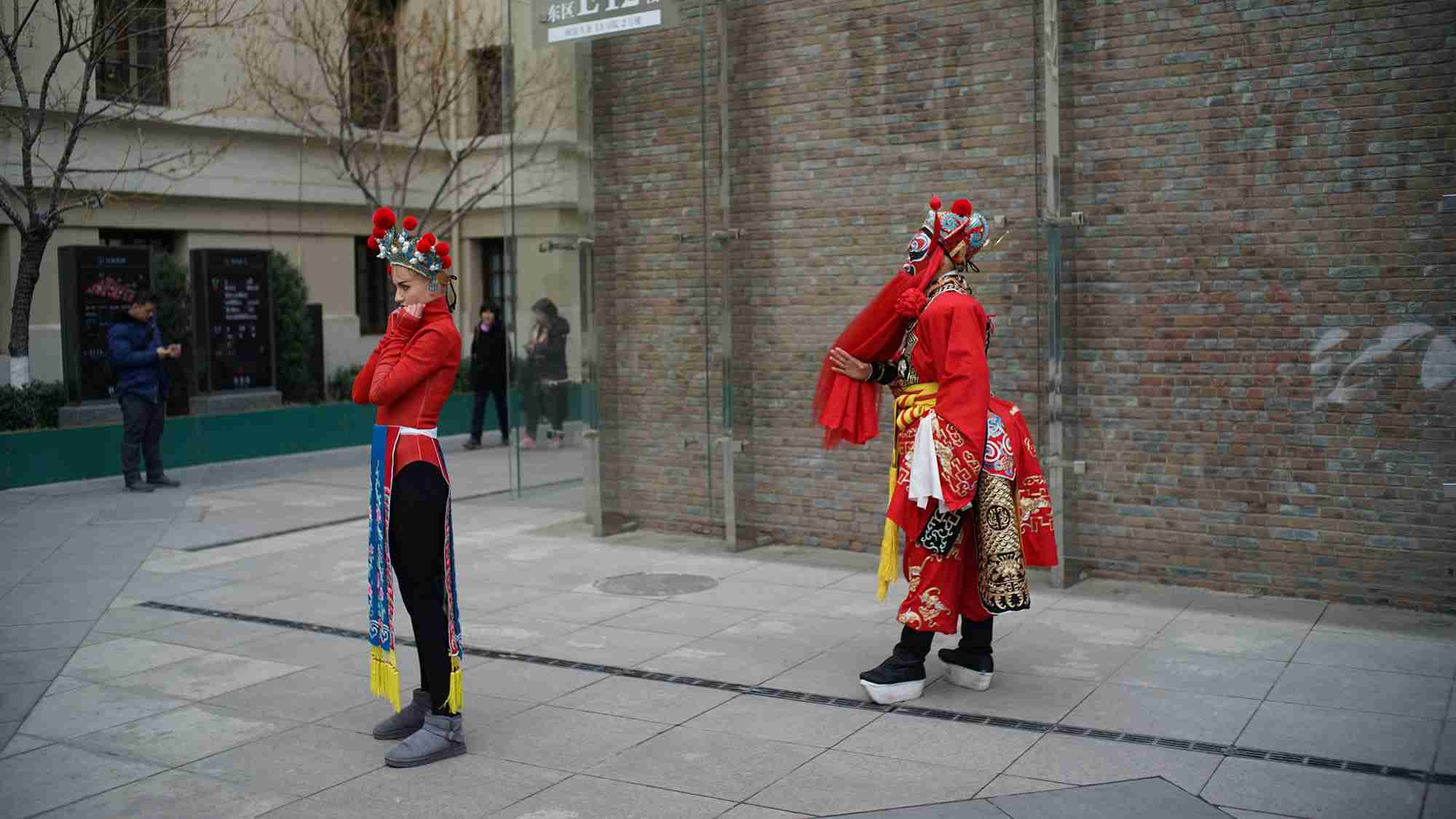
Models take pictures in Beijing Fun Complex in Qianmen Street. /CGTN Photo
Models take pictures in Beijing Fun Complex in Qianmen Street. /CGTN Photo
Read in Page One book store:
Open 24/7, with well-designed interior and a huge collection of books in multi-language, Page One recently become popular among young people in Beijing.

Bookshelf in Page One book store in Qianmen Street. /CGTN Photo
Bookshelf in Page One book store in Qianmen Street. /CGTN Photo
What to eat:
Except for time-honored restaurants such as Yi Tiao Long - an authentic Muslim restaurant and Bian Yi Fang - an old roast duck restaurant, various foods combination in Qianmen Street will amaze your appetite.
A Japanese restaurant called Suzuki Kitchen is highly recommended. It is hidden in Yang Zhu Mei Hutong, which you will see a panel swinging inward, revealing a stone pathway to a Zen garden.
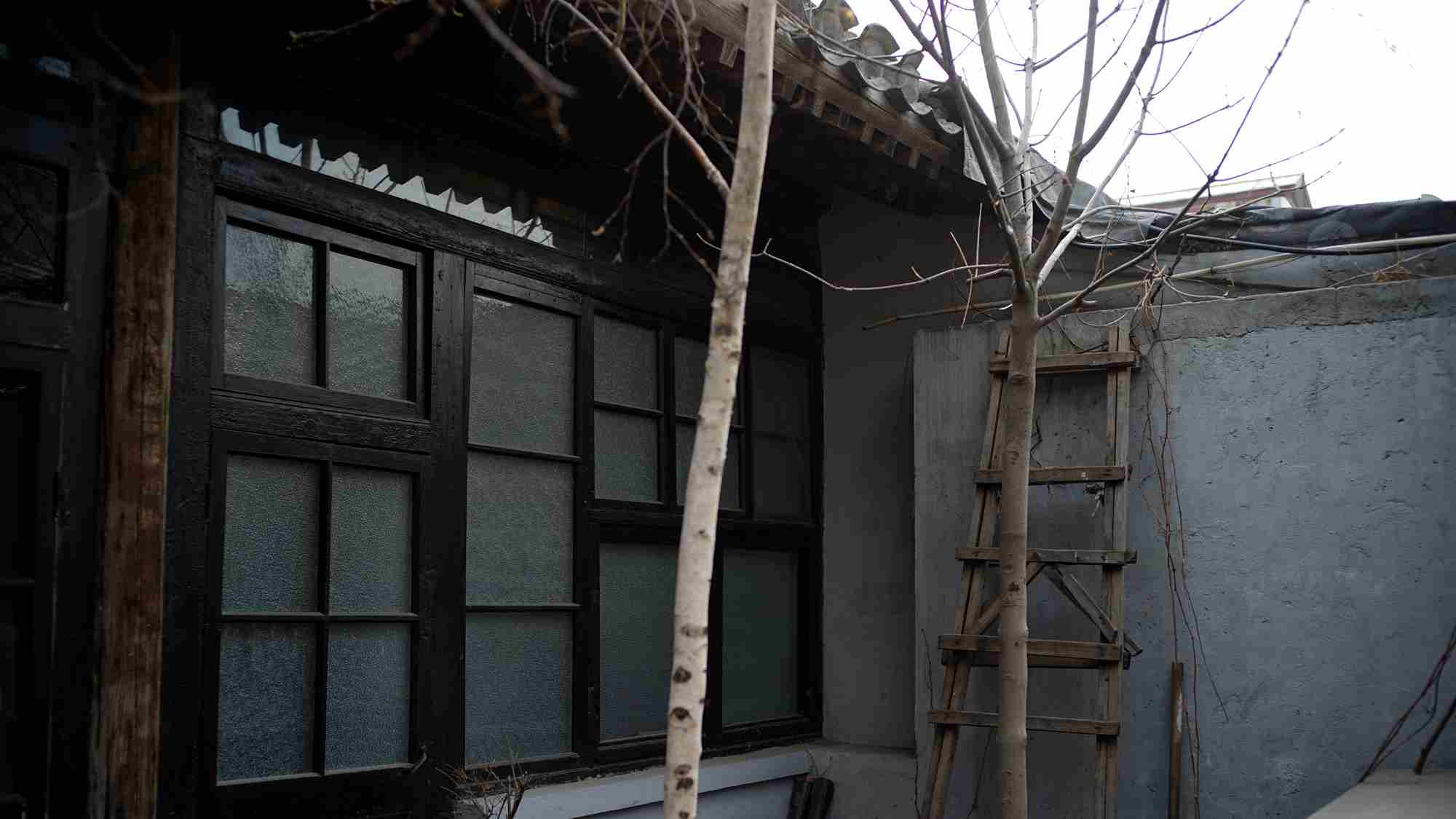
The Zen garden inside Suzuki Kitchen in Qianmen Street. /CGTN Photo
The Zen garden inside Suzuki Kitchen in Qianmen Street. /CGTN Photo
The signature dishes include Teppan, sizzling iron plates of grilled chicken, beef and pork. Besides, steaming bowls of rice topped with meat and tofu and large servings of Japanese-style curry are also good choices with lovely prices.
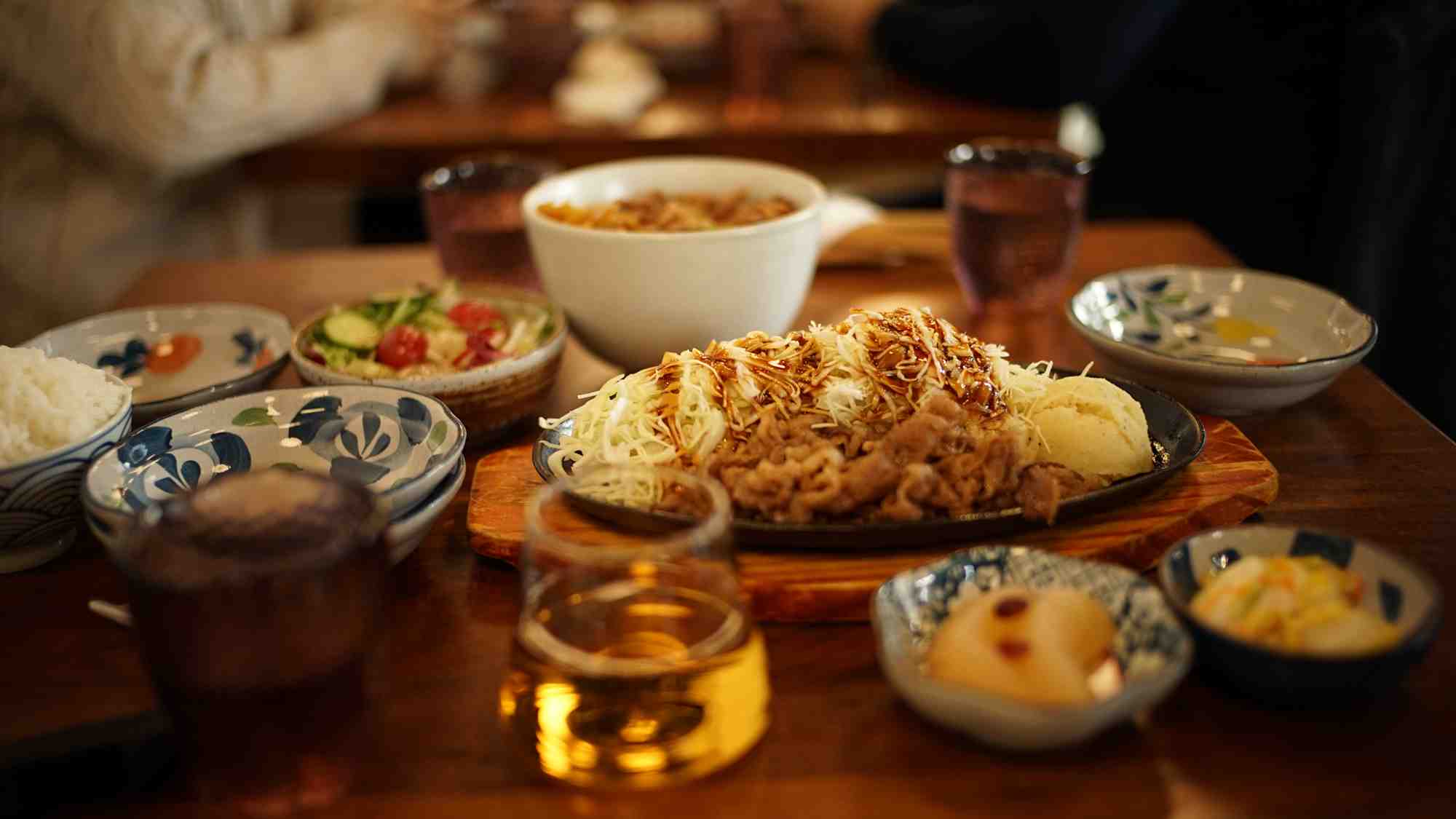
Suzuki Kitchen's signature combo meal. /CGTN Photo
Suzuki Kitchen's signature combo meal. /CGTN Photo
Where to live:
Simple aesthetic visitors now have a choice of Muji Hotel in Beijing near Qianmen Street. It is the second Muji Hotel in the world which opened last year. And with the design philosophy of Muji, this hotel offers a way of embracing an easy and simple life. The price is not “easy” though, a cost around 1,000 yuan (around 150 U.S. dollars) is at least during peak seasons. A couple of Inns and hostels around are cheaper but also with excellent facilities.
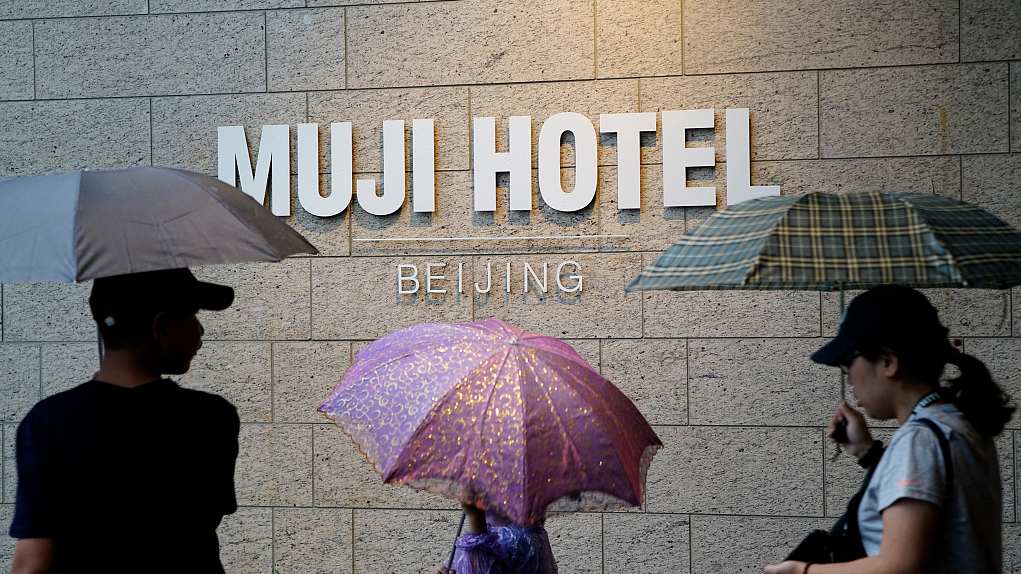
Muji Hotel near Qianmen Street. /VCG Photo
Muji Hotel near Qianmen Street. /VCG Photo
How to get there:
Take Subway line 2, get off at Qianmen Station or take Subway line 7, get off at Zhushikou Station.

